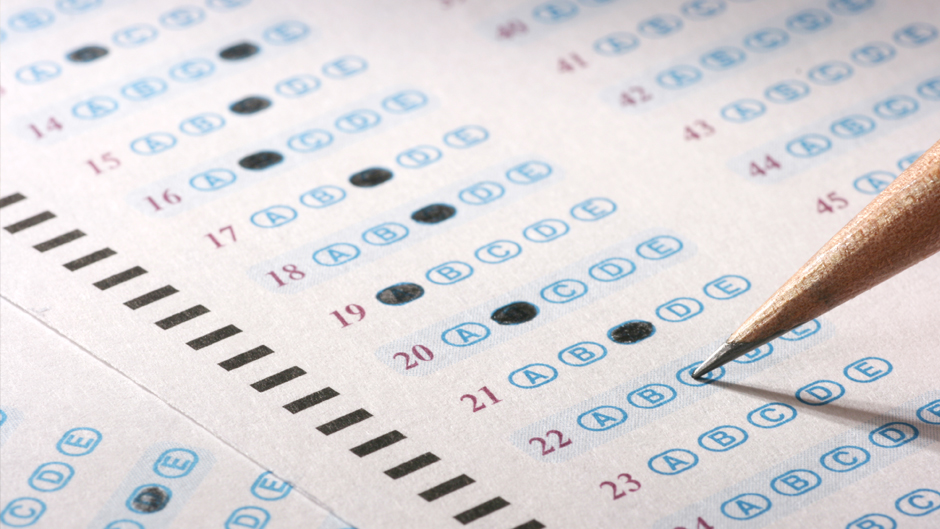The math and reading scores of thousands of students in the United States plummeted after the COVID-19 pandemic, according to the National Assessment of Educational Progress (NAEP), also dubbed as the “national report card.”
The test assessed nearly 450,000 children in 4th through 8th grade.
Math scores for eighth graders fell in nearly every state. A meager 26 percent of eighth graders were proficient, down from 34 percent in 2019, according to the NAEP.
Fourth graders fared only slightly better, with declines in 41 states. Just 36 percent of fourth graders were proficient in math, down from 41 percent, according to the report. Reading scores also declined in more than half of the states. No state showed sizable improvement in reading, the report noted.
“I want to be very clear: The results in today’s nation’s report card are appalling and unacceptable,” stated Miguel Cardona, the U.S. Secretary of Education, in response to the grim picture. “This is a moment of truth for education. How we respond to this will determine not only our recovery, but our nation’s standing in the world.”
Matthew Deroo, assistant professor in the Department of Teaching and Learning at the University of Miami School of Education and Human Development, said that he believes the test results were released without taking into consideration the conditions surrounding the state of education during the pandemic.
“These tests are based on the assumption that business as usual was happening during the pandemic, which was clearly not the case,” said Deroo.
The pandemic forced many schools to close and pushed educators to teach students remotely. Students had to get used to the new technology; and in many cases, they did not have adults to help them in the transition.
Others were affected by personal losses. Some children suffered the loss of parents or caretakers. Researchers calculate that more than 46,000 children in the U.S. have lost one or both parents to COVID-19 since February 2020.
Added to the distress was the fact that teacher and school staffing shortages had a strong effect, experts indicated. Studies show that many experienced teachers left the profession during the pandemic.
“There were just so many disruptions to daily, family, and school life and pressures that shifted focus away from these measures,” said Bruce Baker, professor and chair of the Department of Teaching and Learning. “Interestingly, scores seemed to have slipped regardless of the extent to which their schools operated in person or remotely.”
Baker noted that even prior to the pandemic, school scores had plateaued and, in some cases, declined because of a national trend of disinvestment in public schooling, which began after the 2008 recession. This trend showed that states were spending a smaller share of their overall economic capacity on K-12 schools and not targeting additional resources where needed most, he pointed out.
“Schools generally were not well-positioned as COVID-19 hit,” he said. “Schools serving needier student populations were less positioned than others.”
The NEAP results showed that children who were affected by socioeconomic factors—such as poverty, homelessness, and underperforming schools—fared worse in the testing.
The Brookings Institution reported that test-score gaps between students in low-poverty and high-poverty elementary schools grew by approximately 20 percent in math and 15 percent in reading, during the 2020-21 school year.
Traditionally, students of color and English learners tend not to do well in these tests because they are not designed for those types of learners, Deroo reported.
The federal government allocated $190 billion to help schools reopen and set them back on course. A great deal of that money has been used to improve facilities, provide heating and air-conditioning, and improve the air quality inside of the classrooms, noted Baker.
And a portion of the money has been used by some school districts to provide one-on-one tutoring that could help children improve their math and reading scores, he added.
But both Baker and Deroo said that they believe that it will be difficult for many schools to be able to provide individual tutoring or smaller classes, which could help students improve their skills.
As it is, teachers in many states are required to teach according to the Common Core State Standards, which requires a set curriculum and repeated testing of students’ skills.
“If you have a class of 32 students and a group in that class needs special education services and others are English language learning students, there is already a great deal of care that is going into meeting the needs of these students,” Deroo said. “So, you just cannot say, ‘We will do more differentiation and provide individualized instruction,’ as that is already happening for students,” he pointed out.
“The thing that would help is to reframe our thinking and realize that teachers are doing so much to support our students,” he said.

